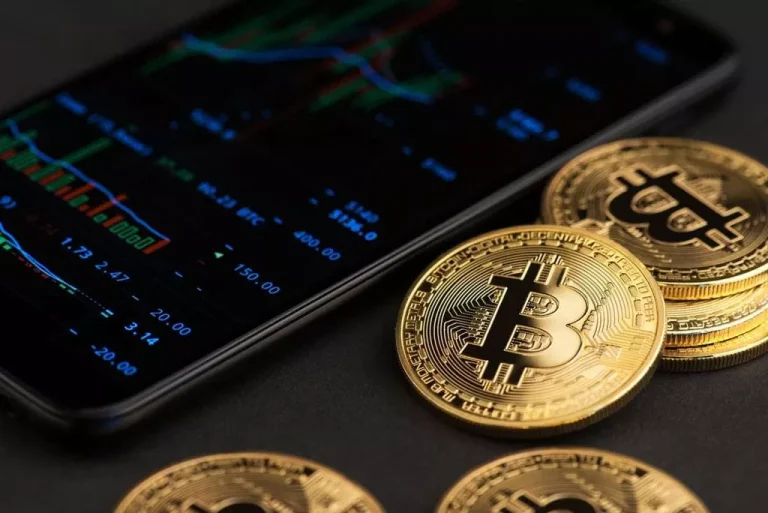Pas encore d'identifiant ?
Solana Vs Ethereum An In Depth Blockchain Comparability
However, under the hood, the blockchain infrastructure comparison of Solana vs Ethereum provides a broad array of technological developments and developments. While each blockchains usually aim for a similar consequence what is solana crypto, every project does so in several methods. This contains using programming languages, consensus models, and development tools.
Real-world Applications And Projects On Solana
Both tasks are good contract platforms, in order that they compete inside the numerous use cases of blockchain. Overall, Ethereum has the first-mover benefit, with a bigger neighborhood and a better-funded ecosystem. As such, it hosts most of the sector’s flagship apps and services, such as the MetaMask wallet, Uniswap trade, and Bored Ape Yacht Club NFTs. Ethereum additionally has the enterprise/institutional benefit, with more adoption, in part due to the backing of ConsenSys.
Statistical Overview Of Solana Vs Ethereum:
This timestamping function adds an extra layer of safety by making it challenging for malicious actors to govern transaction data. In distinction, Ethereum presently operates on a Proof of Work protocol, much like Bitcoin, which requires significant computational power and consequently consumes a considerable amount of energy. The transition to Ethereum 2.zero, which is in a position to shift Ethereum to a Proof of Stake mechanism, is predicted to significantly scale back Ethereum’s vitality consumption and make it extra environmentally pleasant in the long term.
High Fuel Fees And Scalability Challenges
Each has its strengths and weaknesses, and understanding these nuances is crucial for builders, investors, and customers in the blockchain area. The historic context units the stage for an thrilling comparability between two heavyweights shaping the way ahead for cryptocurrencies. Stay tuned as we delve into key variations, efficiency metrics, neighborhood support, and potential progress components that will help you navigate this dynamic landscape successfully. The Ethereum scalability is of the major causes that there’s even a necessity for a blockchain like Solana to exist. While Ethereum can deal with extra users than legacy chains like Bitcoin, its preliminary framework wasn’t powerful sufficient to host the amount of exercise its dApps raked in with out exorbitant transaction fuel fees.
Smart Contracts And Decentralized Purposes
- Ethereum has a extra lively development group, larger DeFi protocols, tokens with bigger market capitalizations and more priceless NFT collections.
- Solana presents a more scalable and cost-effective various for creators and collectors, who’ve flocked to Solana NFT marketplaces embrace Magic Eden, Tensor, and SolSea.
- Ethereum’s established presence and extensive ecosystem make it a preferred selection for retail and institutional traders in search of extra publicity to blockchain know-how and cryptocurrency in addition to just Bitcoin.
- Understanding the variations in transaction fees on Solana and fuel charges on Ethereum might help you make informed choices when selecting a blockchain community in your transactions and activities.
- Yes, Solana is built to support DApps, and because of its scalability, many new initiatives are contemplating it as an various selection to Ethereum.
Like Ethereum, the project uses a proof of stake mannequin, but it also incorporates a singular protocol for time stamping known as Proof of History. This protocol eliminates the necessity for the validator community to achieve consensus over transaction and block occasions and facilitates parallel processing. Solana and Ethereum are each smart contract platforms that assist a broad ecosystem of functions and tokens. While the two initiatives share many similarities, they also have a number of important variations for users and traders. Primarily, Solana has improved upon the low speeds and excessive transaction costs that users have skilled with Ethereum.

What Are The Key Differences Between Solana And Ethereum In The Realm Of Cryptocurrencies?
The Solana community employs a singular consensus mechanism to settle transactions on the chain whereas sustaining decentralisation. This is called Proof-of-History (PoH), a variation of the more popular Proof-of-Stake (PoS). Essentially, PoH creates a historic record of all transactions that helps the blockchain preserve chronological order without requiring its validators (stakers) to speak the precise timestamp of each new block.
By the tip of September 2022, the complete Network will transit to another consensus mechanism – Proof-of-Stake (PoS). Ethereum is set to exchange the PoW, the environmentally unfriendly consensus mechanism it uses at present, with the much more eco-friendly PoS mechanism. Instead, PoS depends on a system of validators, or nodes, to confirm every transaction.

The debate also touches on the trade-offs between scalability, decentralization, and safety. Ethereum’s transition to Proof-of-Stake (PoS) with Ethereum 2.zero addressed many scalability issues whereas sustaining decentralization and safety. Solana’s novel Proof-of-History (PoH) mechanism presents a unique method to achieving scalability and efficiency, elevating discussions on one of the best paths to secure and decentralized blockchain networks. Both blockchains boast robust communities and developer ecosystems, but they cater to barely completely different audiences because of their technical variations. Ethereum’s established presence has nurtured a vast array of tasks and builders. In distinction, Solana attracts these looking for sooner performance and efficiency, highlighting the various needs throughout the developer community and the significance of choice in blockchain infrastructure.

Solana uses a novel consensus mechanism known as Proof of History (PoH), which, mixed with its Proof of Stake system, allows for its high transaction speeds. Ethereum’s Layer 2 solutions, similar to Optimistic Rollups and zk-Rollups, may even see wider adoption, assuaging congestion and reducing fuel charges on the network. Ethereum and Solana supply numerous use cases and functions within the blockchain space. Ethereum has a well-established presence in DApps, DeFi, and NFTs, while Solana is rapidly gaining floor in these areas, particularly as a outcome of its performance advantages.
Proof-of-History is a singular resolution to the blockchain timekeeping drawback, allowing the network to achieve excessive throughput and effectivity by encoding the passage of time into the blockchain itself. This innovation, mixed with the Proof-of-Stake (PoS) consensus mechanism, forms the muse of Solana’s structure, enabling it to course of transactions at unprecedented speeds. One of the most effective benefits of Solana is that you don’t need any blockchain experience to create an utility. As such, builders can use familiar languages similar to C and C++ (and the less common programming language, Rust) to build and deploy dapps on-chain. Then, Solana programs will run immutably through the Solana Sealevel runtime protocol.
The success of the Ethereum merge in 2022, when the blockchain moved from an energy-intensive proof-of-work system to a extra sustainable proof-of-stake system, could probably be a great indication of its endurance. In September of 2022, Ethereum successfully underwent a transition to a Proof-of-Stake consensus mechanism. This has significantly lowered the environmental impact of the Ethereum community, and has also opened the doors for certain scalability improvements, which wouldn’t have been possible under Proof-of-Work. Prior to the launch of the Solana blockchain, the project raised funds for improvement through non-public token gross sales and a public sale on the CoinList platform.
According to DappRadar, Magic Eden has witnessed appreciable development since early April. The largest NFT-trading platform, Opensea, initially began off on Ethereum; however, the marketplace lately introduced a partnership with Solana as nicely. Another important criterion for Solana vs. Ethereum comparison is the blockchain structure.
Ethereum presently leverages the PoW consensus mechanism, drawing power from multiple miners worldwide taking part actively within the consensus. PoW consensus calls for high computing energy, thereby proscribing the scope of participation for users. It helps ensure safety and full decentralization for ETH, nevertheless it additionally suffers from concerns of lowered performance. Solana facilitates smart contracts and DApp creation and helps a broad range of DeFi platforms and NFT marketplaces. For the previous couple of years, Ethereum has been fighting congestion issues, meaning that there’s an inundation of transactions occurring on it that it can not efficiently manage. There are other aspects of Solana that highlight this, such as its capability to settle transactions sooner than Ethereum and scale more efficiently.
Read more about https://www.xcritical.in/ here.